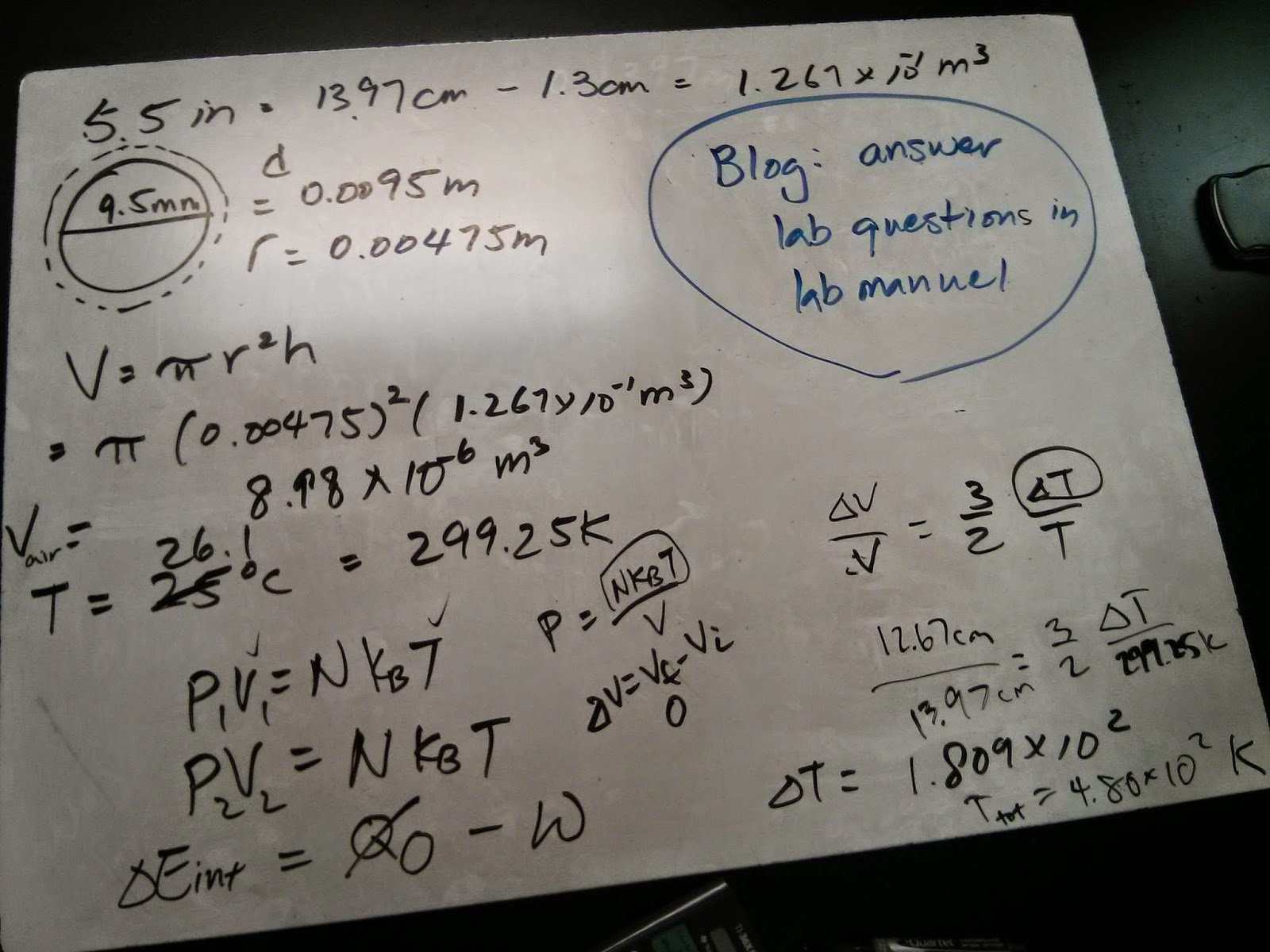The review for the quiz for the beginning of the class on evaluating the graph and finding the mass of the water.
Prof Mason submerging the flask into ice water and warm water. The syringe acts like a piston and displace a change in volume inside the syringe.
Our prediction of the work being done by the system shown that the syringe will move upwards (increasing in volume).
The first law of thermodynamic on the left side, and the interpretation of the first law in the words for a 7 yr old to understand.
Examples of isothermal process: a balloon losing air and the change of volume is the work done on the system.
A sample calculation from the lecture to find the change of volume using work = (delta)V*p and the conversion of units.
The derivation of a function in terms of mass and velocity.
Using a cube, we find the function of pressure in terms of volume.
Using relation of pressure we find in the above picture, we find the function of temperature in terms of kinetic energy.
We further examined the isothermal process by evaluating the inernal energy, and the adiabatic process from work done.
The calculation of the change of temperature inside the fire syringe. The change of volume from the work done on the system causes the temperature to go up high rapidly due to the inverse relationship of volume and pressure.
Homework:



























